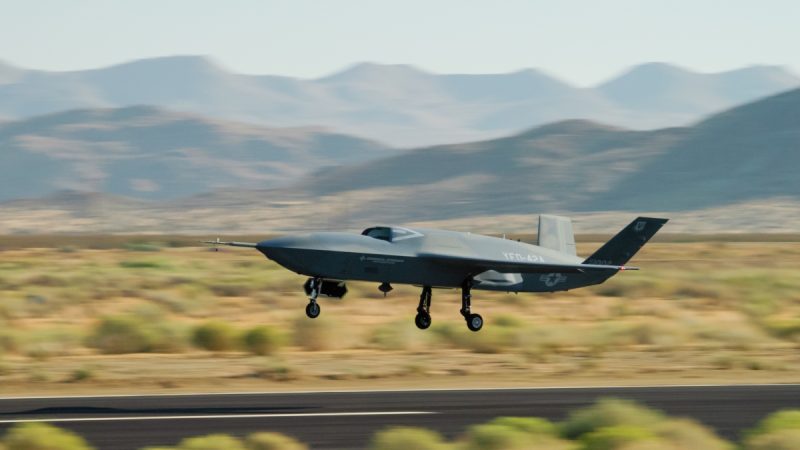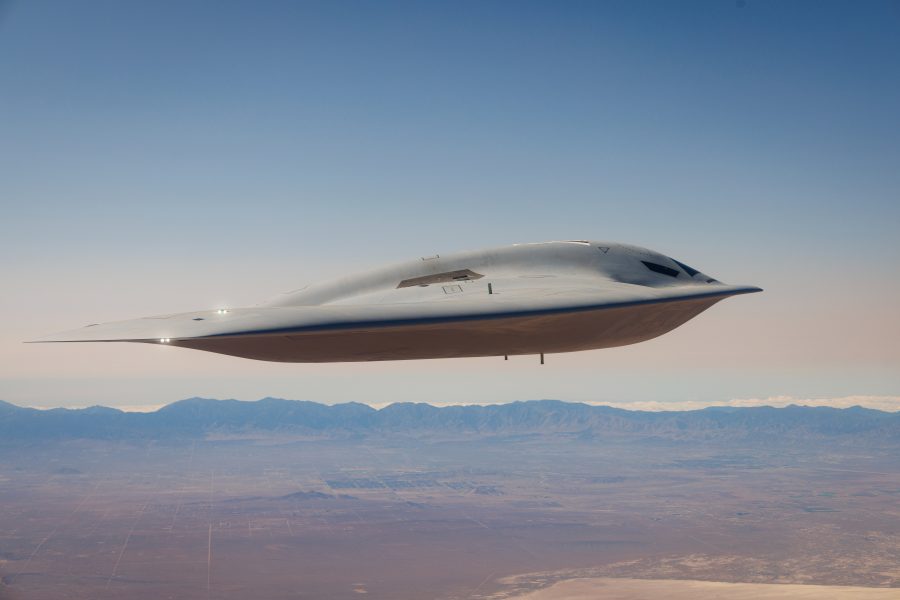NATIONAL HARBOR, Md.—Winning future wars will require air dominance achieved through a blend of stealth, numbers, spectrum warfare, and an ability to swiftly adapt, Air Force and industry experts said at AFA’s Air, Space & Cyber Conference.
And all of that depends on enough resources to do the job, said Maj. Gen. Joseph D. Kunkel, director of Force Design, Integration, and Wargaming and deputy chief of ataff for Air Force Futures.
“Fiscal constraints don’t change what it takes to win, so we’ve got to be clear-eyed on that,” Kunkel said during a panel discussion Sept. 23. History shows that “if you want to win the fight … you’re going to win it in the air domain with support from space.”
If the Air Force explains in a “coherent warfighting story” to its joint partners how it can help everyone win, “there will be an infusion of cash in the Air Force,” Kunkel said. “If the strategy has changed, the resources have got to follow.”
CCA
Collaborative Combat Aircraft—the semi-autonomous escorts to crewed fighters—will deliver some of the needed “affordable mass” to prevail, Kunkel said. But their other benefit, “often overlooked,” he noted, is that “in any future fight, the ability to adapt very quickly and then scale is going to be important.”
CCAs will have standard digital architectures and modularity to allow for quick reactions to changes in the way the enemy fights, Kunkel said. They will also be inexpensive enough to be produceable in needed quantities, if “simplicity” and a low price point remains part of their model. He said CCAs would bring rapid adaptation and evolution, “much like we did with the Century Series” of fighters from the 1950s and 1960s.
Brig Gen. Jason D. Voorheis, program executive officer for fighters and advanced aircraft, said the CCA program is being developed “with export in mind,” so that the U.S. can get even more benefits of mass from allies and partners also acquiring and operating them.

Stealth
Northrop Grumman has played a major role in developing stealth technologies by building the B-2, B-21, and part of the F-35. Yet Tom Jones, head of Northrop’s aerospace unit, said his company doesn’t use the term “stealth” anymore, having moved on to “survivability.”
“When I get in these philosophical discussions about the future of stealth, I try to remind people [that] the history of warfare has always been about measure, countermeasure, counter-countermeasure,” he said. “And stealth is exactly the same way.”
The technology in the B-2 bomber is 50 years old, Jones said, “which is just incredible, that a system designed that far back in time can still perform.”
Rather than stealth, Northrop talks about survivability because “it is not a static thing. It is a layered set of technologies and operational aspects. … It is not about being invisible. It’s about disrupting enemy kill chains, which can be done through signature management” and electronic warfare.
To keep evolving in survivability, Northrop has to stay “very close with our development customers and our operational customers [so] we understand where the threat’s going,” Jones said. It’s also necessary to invest “proactively and aggressively” in new materials, software, and flight controls.
On the investment front, Jones said Northrop now has “incredibly accurate models” for predicting how stealthy a material or technique will be. The experimental results “look like carbon copies” of the theoretical predictions.
Spectrum Warfare
Retired Lt. Gen. David A. Krumm, vice president for business development with BAE Systems, said “everything has changed” about the use of the electromagnetic spectrum in the last 30 years. Back then, the Air Force was very good at offense and defense in electronic warfare, but “the part we were so good at was kind of small.”
Now, “modern technology has opened up that electromagnetic spectrum” so that every element of the kill chain can exploit any part of it. As a result, the Air Force must both attack and defend within and across the spectrum at the same time. “That’s a really complicated task,” Krumm said.
The Air Force is buying a new electronic attack jet in the EA-37B, but the new Compass Call won’t erase the fact that “almost every single [system] is going to have to either be supported or have this onboard support of electronic warfare”, Krumm said.
Panelists agreed that connectivity within the force will be crucial, especially to maintain control of a large CCA fleet. But Kunkel said it will also be necessary that sixth-generation aircraft like the F-47 and B-21 have “both the long range kill chain and an organic kill chain”—if needed, they can make their own way to the target without the help of the whole air combat enterprise.
Such a capability is important because an adversary like China will try to jam and disrupt U.S. command and control.
“There will be times when long range kill chains are down and you’re still going to want to be able to take the fight to the adversary,” he said, “I think we need to think about how we integrate long range kill chains and organic kill chains.”
He predicted that pilots of those aircraft will eventually be given the means to switch as seamlessly between the enterprise system and their own system as easily as switching between guns and missiles on a control stick.
“We are looking at affordable long-range weapons, all right, and they’ll be a part of this mix. But we’ve also got to realize that the kill chains are going to be more difficult, and if you can unlock the arsenal of direct attack weapons, you’re going to find yourself in a place where you can attack the adversary more frequently,” Kunkel said.


